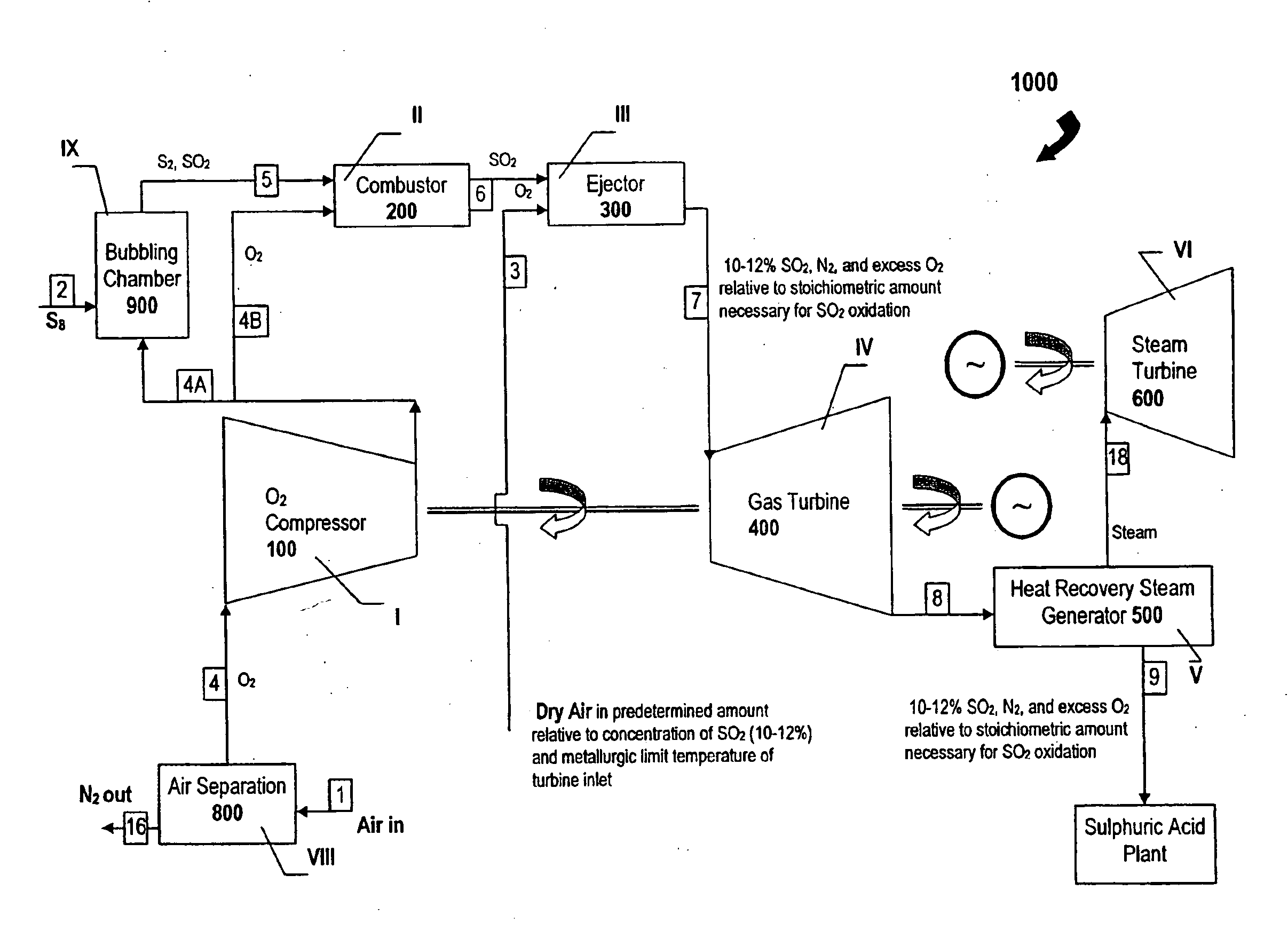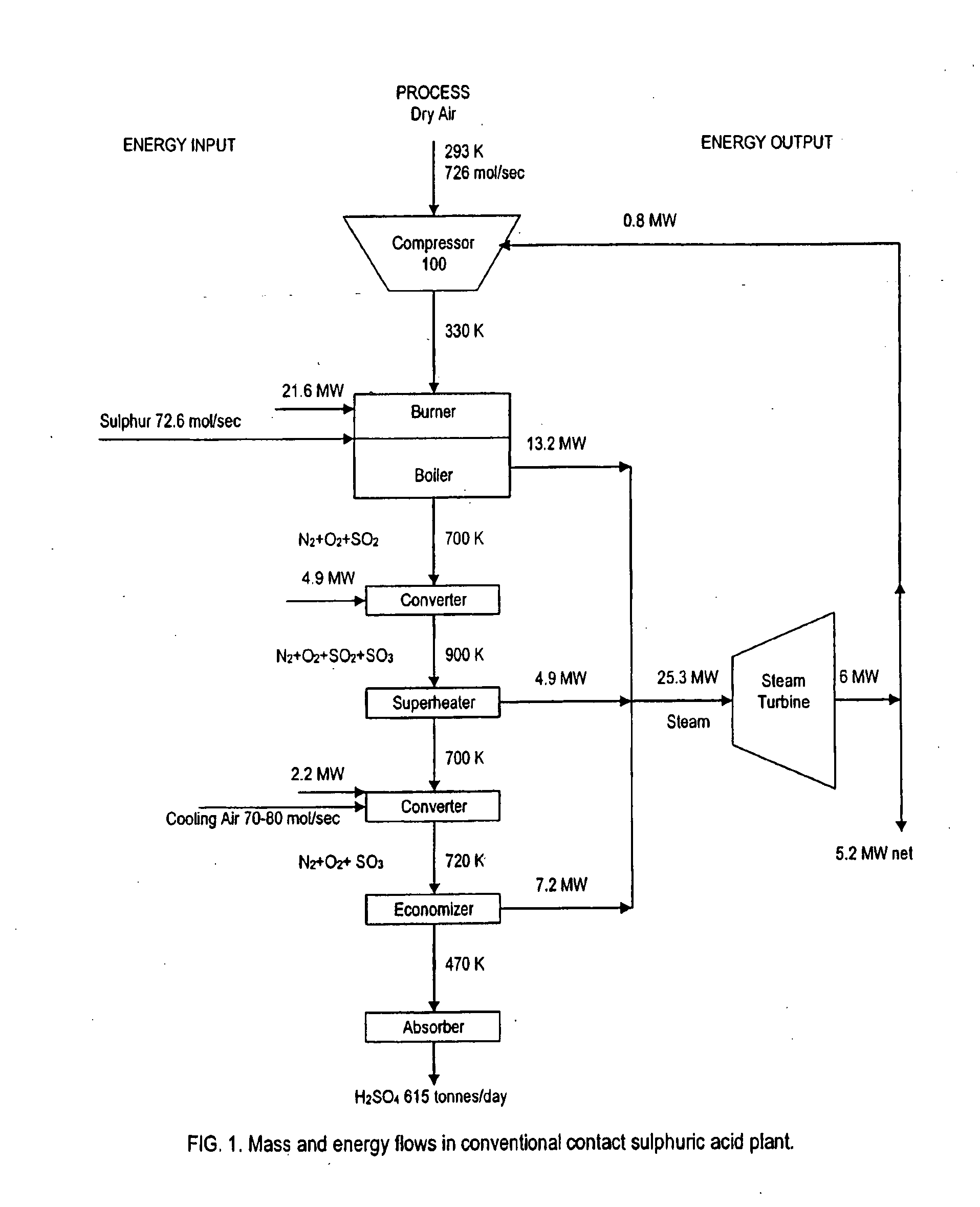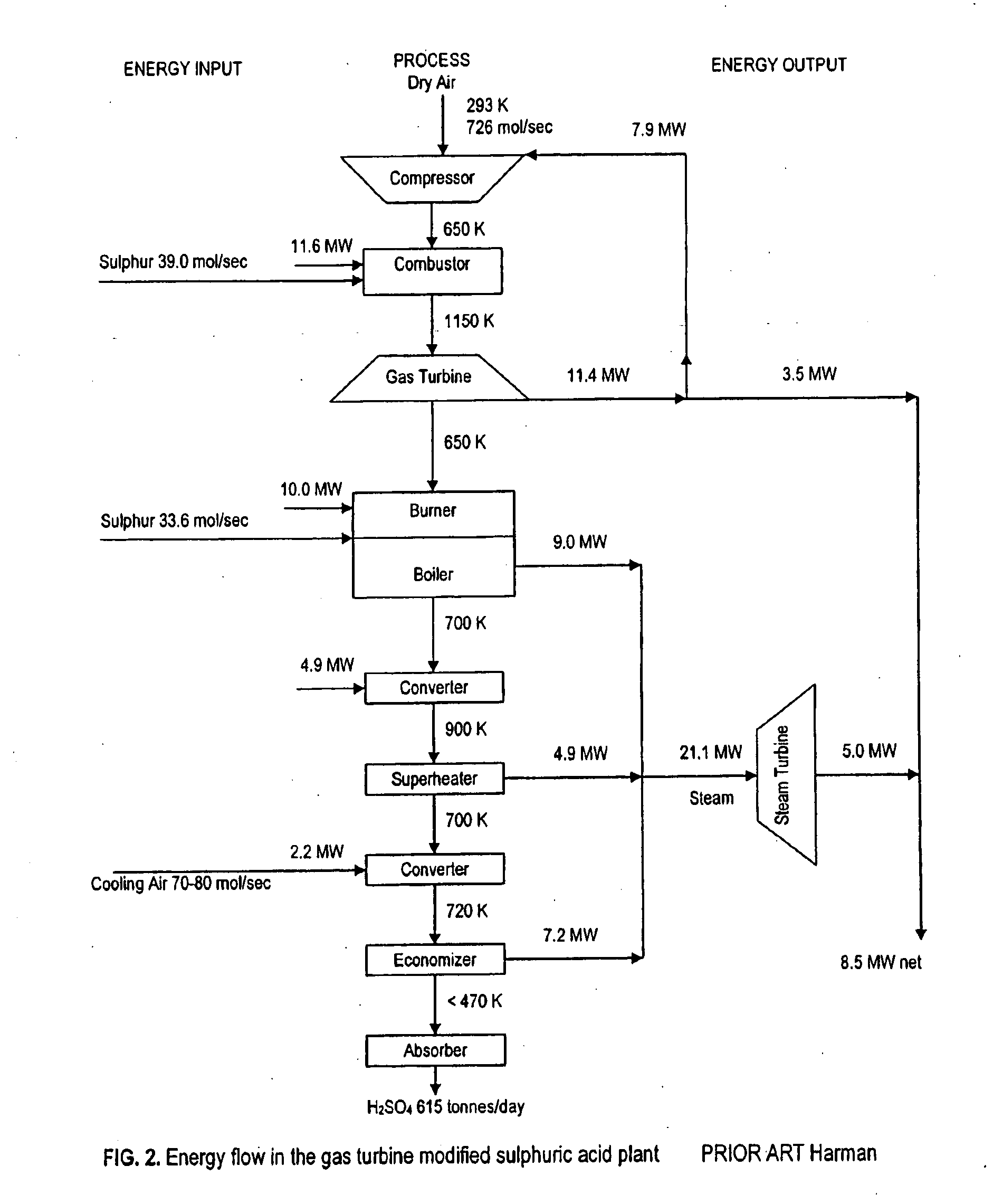Gas Turbine Topping in Sulfuric Acid Manufacture
a gas turbine and sulfuric acid technology, applied in the direction of sulfur compounds, inorganic chemistry, jet propulsion plants, etc., can solve the problems of not being able to burn all the sulfur required, damage to the turbine blades, and not being able to achieve the effect of maximum energy recovery
- Summary
- Abstract
- Description
- Claims
- Application Information
AI Technical Summary
Benefits of technology
Problems solved by technology
Method used
Image
Examples
example 1
[0045]A gas mixture containing 65.5 percent by volume (64,328 kg / hr) of sulfur dioxide, 34.0 percent by volume (16,309 kg / hr) of oxygen, and 0.5 percent by volume (213 kg / hr) of inert gas was delivered under a pressure of 15 atm and at temperature of 650° C. into the ejector, where the gas mixture was mixed with a circulating gas.
[0046]At the exit from the injector, the gas composition was follows: 0.04 percent by volume 78 kg / hr) of sulfur trioxide, 49.2 percent by volume (71,269 kg / hr) of sulfur dioxide, 37.94 percent by volume (268,249 kg / hr) of oxygen, and 12.82 percent by volume (79,327 kg / hr) of nitrogen. The temperature of the gas mixture was 350 to 550° C. and the pressure was 10 atmospheres.
[0047]As is shown in FIG. 6 and FIG. 8, the sulfur dioxide and the sulfur vapor exits from the vaporizer (bubbling chamber) 900 at stage IX as stream 5 at a temperature not exceeding 700-800° C. and is then directed into the combustor 200 at stage III. Secondary oxygen in a stoichiometri...
example 2
[0055]In this particular example, the cross-sectional area of the bubbling chamber (FIG. 5) was about 3 m2, and its diameter was 2 meters. The height of the sulfur melt was maintained at 1 metre (under stationary conditions). The bubbling chamber was an apparatus 3.5 m high. The height of the separation space above the melt was 0.8 m, and the height of the settling zone was 1.2 m. The hot, low-viscosity sulfur at a temperature of 140-150° C. was delivered into a bubbling chamber. The consumption rate of sulfur was 7370 kg / hr. Technical oxygen, containing up to 2% by volume of inert gas, was used.
[0056]The process was effected under a pressure of 10 atm and at a temperature of the melt equal to the boiling point of sulfur at a given pressure −646.1° C. (according to The Sulfur Data Book, Freeport Sulfur Company (1954)). This temperature was maintained in the bubbling chamber by the heat liberated in the oxidation reaction of part of the sulfur with oxygen as it was bubbled through th...
example 4
[0059]In this further example, the process was carried out as described in Example 1, except that the pressure was 25 atm, and the temperature of the molten sulfur was maintained at 650° C., which was below the boiling point of sulfur at this pressure. Excess heat was withdrawn by heat-exchangers that were located directly in the molten sulfur bed. Liquid sulfur having a temperature of 140-150° C. was a delivered into bubbling chamber at a rate of −30,234 kg / hr. The height of the molten sulfur bed was 3 metres, and its height was 16 metres. Technical oxygen was delivered into the apparatus under a pressure of 25 atm at a rate of −4559.9 kg / hr. The amount of delivered nitrogen was −20 kg / hr.
[0060]The gaseous mixture discharged from the bubbling chamber consisted of sulfur vapor −25,675 kg / hr, which was 81.2% per volume, sulfur dioxide −9120 kg / hr, which was 18.4% per volume, and inert gases −20 kg / hr or 0.42% per volume.
PUM
 Login to View More
Login to View More Abstract
Description
Claims
Application Information
 Login to View More
Login to View More - R&D
- Intellectual Property
- Life Sciences
- Materials
- Tech Scout
- Unparalleled Data Quality
- Higher Quality Content
- 60% Fewer Hallucinations
Browse by: Latest US Patents, China's latest patents, Technical Efficacy Thesaurus, Application Domain, Technology Topic, Popular Technical Reports.
© 2025 PatSnap. All rights reserved.Legal|Privacy policy|Modern Slavery Act Transparency Statement|Sitemap|About US| Contact US: help@patsnap.com



